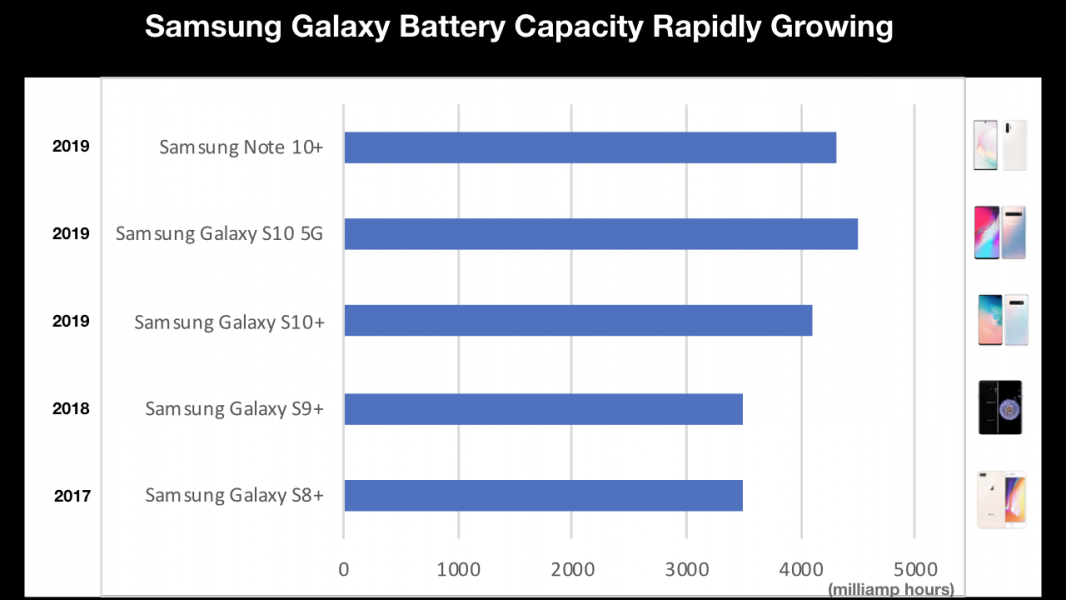The Galaxy S10 5G has the largest battery capacity of all the Galaxy phone models released in 2019 and prior years and was the first Samsung phone released that supported USB PD 3.0 with PPS technology.
Earlier, we did some videos on how the Galaxy S10 5G charged using after the phone was first purchased. After 20 charging cycles and upgrading the phone software version to G977NKOU2ASJ1, let's look again at the charging behavior.
Using the same GRL-C2 USB PD Tester and GRL-PSP Power Analyzer software from Granite River Labs that was used before, we can examine more closely the updated charging behavior on the Galaxy S10 5G.
When the Galaxy S10 5G is fully drained and kept off, we connect the phone to the Samsung 25W PD 3.0 PPS Type-C Charger.
During the “Fast Charge” mode, VBUS power stays around 24W while VBUS voltage varies around 9V, with the phone external temperature (which is recorded using a FLIR camera) increasing by 15 degrees C. During “Cool Down” mode, VBUS current drops steadily which helps to reduce the phone temperature as well. Finally, in “Saturation” mode the VBUS voltage stays constant while current gradually gets lowered to zero until the phone’s battery is 100% full.
We now repeat the same testing and analysis, but this time with the Galaxy S10 5G drained to 1% and with the display and WI-FI kept active. During the initial charger plug-in, we no longer see the repeated saw tooth shaped power curves which result in both voltage and current ramping at the same time. This time only see 1 cycle of voltage and current increasing concurrently.
Looking at the full charging cycle, we see that during the “Fast Charge” mode, VBUS power stays at 24W for a very short period of time before going into a “Cool Down” mode where power is kept mostly at 7.5W. This conservative approach keeps the phone temperature below 40 deg C at the price of much longer charging time. "Saturation" mode starts when the battery charge hits 80%.
Comparing how the Galaxy S10 5G charges when the phone is off vs when the phone's display and WI-FI kept active, we can see that the phone charges much faster while off since much higher charging power and temperature increase is allowed when the phone is off.
If we connect the Galaxy S10 5G to the higher power Samsung 45W Super Fast Charge Wall Charger, we can see that ironically that initially the phone charges slightly faster with the Samsung 25W PD 3.0 PPS Type-C Charger but over the long term, there is not much difference in charging behavior and time between the two chargers.
 GTrusted
GTrusted






























